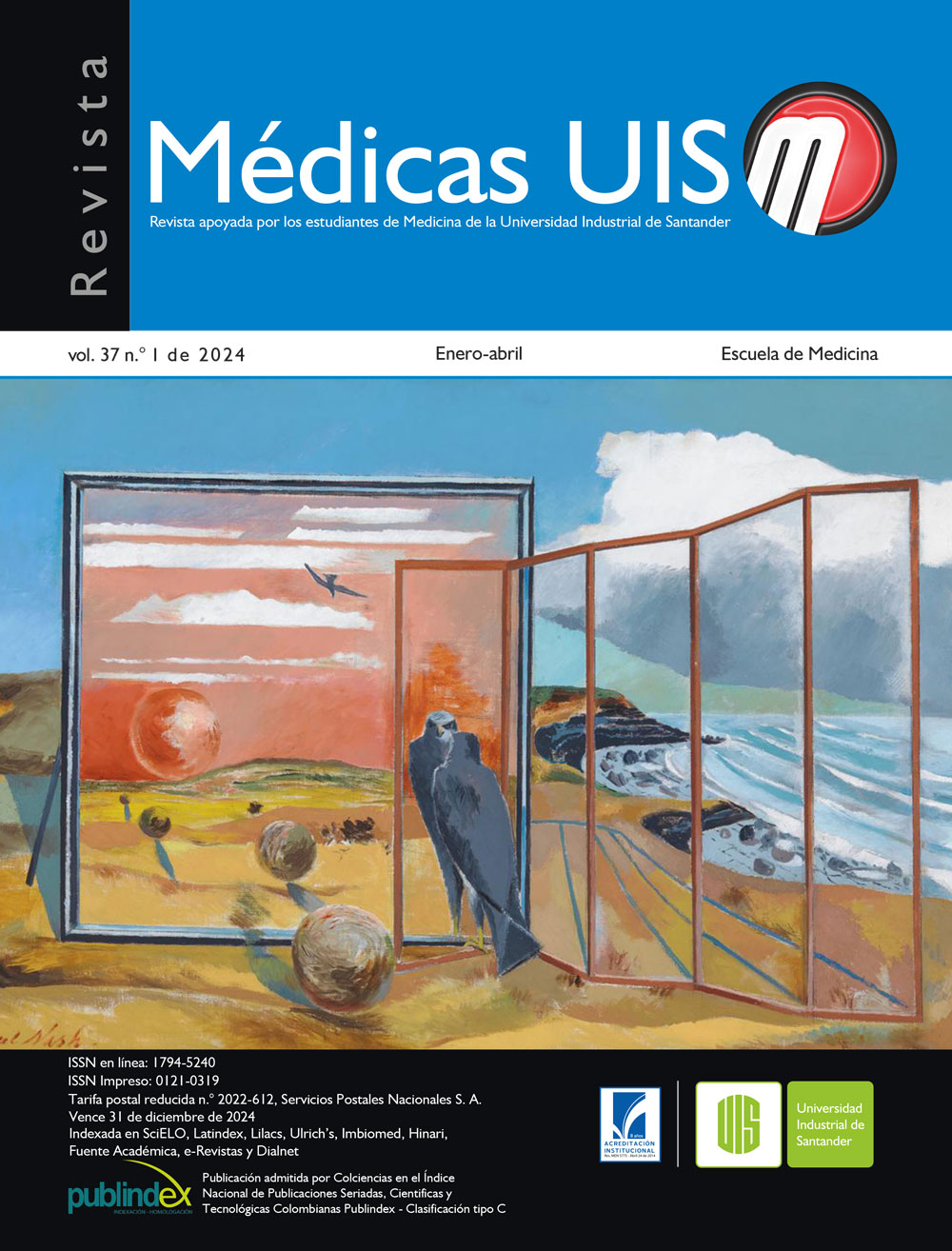Abstract
Skeletal dysplasias are alterations in bone and cartilage growth with a wide clinical and radiological spectrum, whose prevalence is 2 to 5 cases per 10 000 newborns. The case of a 9-year-old male patient with asymmetrical short stature, normal neurodevelopment, without musculoskeletal deformities and relatives with unexplored short stature is presented. Skeletal dysplasia was diagnosed; however, in the presence of normal paraclinical studies, a molecular study was indicated that revealed a new variant of uncertain significance in the TRVP4 gene. Subsequently, with the use of databases and bioin- formatics, it was reclassified as likely pathogenic. In subsequent assessments, it was determined that there was no specific management and, given the absence of complications amenable to therapy, clinical follow-up was indicated. The impor- tance of reanalysis of molecular studies and bioinformatic strengthening that facilitates timely diagnosis is highlighted, allowing the application of detection, monitoring and treatment strategies.
References
Heath KE, Montané LS. Displasias esqueléticas en endocrinología pediátrica: perspectiva clínica y genética. Rev Esp Endocrinol Pediatr. 2022;13(2):96-106.
Cavalcanti DP, Fano V, Mellado C, Lacarrubba- Flores MDJ, Silveira C, Silveira KC, et al. Skeletal dysplasias in Latin America. Am J Med Genet C Semin Med Genet. 2020;184(4):986-995.
Rodríguez F, Rueda L, Zarante I. Descripción de 29 casos de displasias esqueléticas reportados en 6 hospitales de Bogotá, Cali y Manizales y factores de riesgo asociados. Iatreia. 2010;23(4S):S-105.
Mortier GR, Cohn DH, Cormier-Daire V, Hall C, Krakow D, Mundlos S, et al. Nosology and classification of genetic skeletal disorders: 2019 revision. Am J Med Genet A. 2019;179(12):2393-2419.
Taga A, Peyton MA, Goretzki B, Gallagher TQ, Ritter A, Harper A, et al. TRPV4 mutations causing mixed neuropathy and skeletal phenotypes result in severe gain of function. Ann Clin Transl Neurol. 2022;9(3):375-391.
HumanCyc [Internet]. Homo sapiens TRPV4. [citado 26 de junio de 2023]. Disponible en: https://humancyc.org/geneorgid=HUMAN&id=HS03377
James D, Subramanian L, Selina A, Palocaren T, Madhuri V. Novel TRPV4 Pathogenic Variant in Severe Metatropic Skeletal Dysplasia: A Case Report. Malays Orthop J. 2022;16(2):145-149.
NCBI. Gene [Internet]. TRPV4 transient receptor potential cation channel subfamily V member 4 [Homo sapiens (human)]. [citado 23 de mayo de 2023]. Disponible en: https://www.ncbi.nlm.nih.gov/gene/59341
McCray BA, Schindler A, Hoover-Fong JE, Sumner CJ. Autosomal Dominant TRPV4 Disorders. In: Adam MP, Feldman J,Mirzaa GM, Pagon RA, Wallace SE, Bean LJH, Gripp KW, Amemiya A, editors. GeneReviews. Seattle (WA): University of Washington, Seattle; 2020. 1993–2024.
McNulty AL, Leddy HA, Liedtke W, Guilak F. TRPV4 as a therapeutic target for joint diseases. Naunyn Schmiedebergs Arch Pharmacol. 2015;388(4):437-450.
Khatib NS, Monsen J, Ahmed S, Huang Y, Hoey DA, Nowlan NC. Mechanoregulatory role of TRPV4 in prenatal skeletal development. Sci Adv. 2023;9(4):eade2155.
Dicks AR, Maksaev GI, Harissa Z, Savadipour A, Tang R, Steward N, et al. Skeletal dysplasia- causing TRPV4 mutations suppress the hypertrophic differentiation of human iPSC- derived chondrocytes. Elife. 2023;12:e71154.
Willard VP, Leddy HA, Palmer D, Wu CL, Liedtke W, Guilak F. Transient receptor potential vanilloid 4 as a regulator of induced pluripotent stem cell chondrogenesis. Stem Cells. 2021;39(11):1447- 1456.
Faye E, Modaff P, Pauli R, Legare J. Combined Phenotypes of Spondylometaphyseal Dysplasia- Kozlowski Type and Charcot-Marie-Tooth Disease Type 2C Secondary to a TRPV4 Pathogenic Variant. Mol Syndromol. 2019;10(3):154-160.
Liu Y, Yan X, Chen Y, He Z, Ouyang Y. Novel TRPV4 mutation in a large Chinese family with congenital distal spinal muscular atrophy, skeletal dysplasia and scaly skin. J Neurol Sci. 2020;419:117153.
Ragamin A, Gomes CC, Bindels-de Heus K, Sandoval R, Bassenden AV, Dib L, et al. De novo TRPV4 Leu619Pro variant causes a new channelopathy characterised by giant cell lesions of the jaws and skull, skeletal abnormalities and polyneuropathy. J Med Genet. 2022;59(3):305- 312.
Licata L, Via A, Turina P, Babbi G, Benevenuta S, Carta C, et al. Resources and tools for rare disease variant interpretation. Front Mol Biosci. 2023;10:1169109.
Diez O. Utilización de bases de datos genéticos en el ámbito clínico. Ed. Cont. Lab. Clin. 2017;37:59-68.
Li MM, Datto M, Ducavage EJ, Kulkarni S, Lindeman NI, Roy S, et al. Standards and Guidelines for the Interpretation and Reporting of Sequence Variants in Cancer: A Joint Consensus Recommendation of the Association for Molecular Pathology, American Society of Clinical Oncology, and College of American Pathologists. J Mol Diagn. 2017;19(1):4-23.
Santos Simarro F. Advances in clinical genetics and its current challenges. An Pediatr. 2022;97(4)281.e1-281.e5.
Tchio Tchoumba MA, Bai Y, Jin R, Yu X, Male M. Metatropic Dysplasia of Nonlethal Variant in a Chinese Child – A Case Report. Orthop Surg. 2020;12(1):333-336.
James D, Subramanian L, Selina A, Palocaren T, Madhuri V. Novel TRPV4 Pathogenic Variant in Severe Metatropic Skeletal Dysplasia: A Case Report. Malays Orthop J. 2022;16(2):145-149.
Jędrzejowska M, Dębek E, Kowalczyk B, Halat P, Kostera-Pruszczyk A, Ciara E, et al. The remarkable phenotypic variability of the p.Arg269HiS variant in the TRPV4 gene. Muscle & Nerve. 2018;59(1):129-133.
Lamandé SR, Yuan Y, Gresshoff IL, Rowley L, Belluoccio D, Kaluarachchi K, et al. Mutations in TRPV4 cause an inherited arthropathy of hands and feet. Nat Genet. 2011;43(11):1142-1146.

This work is licensed under a Creative Commons Attribution 4.0 International License.
Copyright (c) 2024 Médicas UIS
